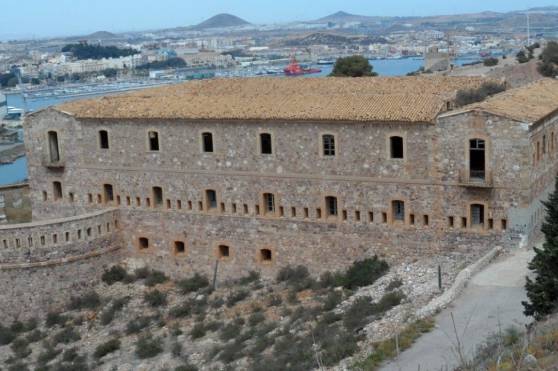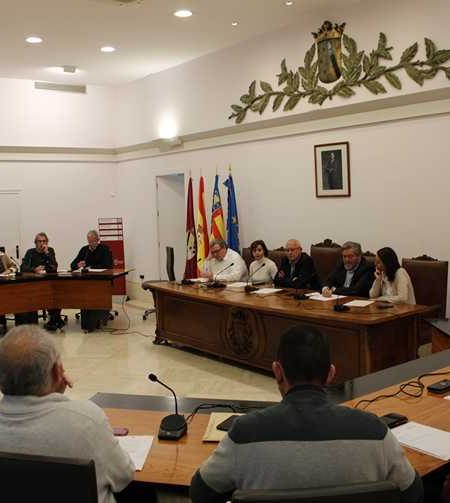The Fajardo defensive complex, located in the Podadera grove, south of Monte de Galeras, whose waters sheltered by its slopes served as a refuge for royal ships more than a hundred years ago, will soon be a luxury hotel where you can enjoy one of the best views of the port “to which those of Carthage gave its name, closed to all winds and hidden, to whose clear and singular renown bow down all the ports the sea bathes, the sun discovers, and man has sailed,” as Cervant
This project, led by Mayor Noelia Arroyo, begins with the completion of the 1996 urban development agreement, which was pending the transfer of a plot of land that could not be carried out between the City Council and the Ministry of Defence, which owned approximately 90 hectares, including the Galeras Castle, the Fajardo, La Podadera, and Collado batteries, the submarine tunnels, and the Navidad Fort.
The acquisition is the result of a long-term negotiation with the Ministry of Defence that had been well underway for months, but the mayor did not decide to give the initiative a definitive push until she confirmed that there were real opportunities for collaboration with the private sector to rehabilitate part of the existing heritage with new sustainable uses, especially in the area surrounding the former Fajardo barracks, municipal sources explained.
Although the formal transfer of ownership has not yet occurred, at Arroyo’s request, the Infrastructure and Security departments are preparing an initial intervention plan to ensure minimum security conditions at the entrances. This plan will allow the entrances to operate in an orderly and safe manner because the condition of the buildings requires establishing access restrictions, despite the municipal intention to permit as open a use as possible.
The City Council is focusing on Galeras as a medium- and long-term goal, which will necessitate major investment and collaboration from administrations, organisations, and enterprises due to its ambitious heritage and environmental restoration project spanning over 90 hectares.
Sources within Arroyo’s executive team have organised the initiative along two key axes. On the one hand, the Fajardo barracks and its surrounds will be restored and converted into a high-quality hotel in conjunction with private investors. It’s worth noting that in October, AC Hotels by Marriott declared its intention to build a hotel in the military fortification. The City Council has decided on a heritage restoration strategy for tourism purposes that “will enhance the property’s value without burdening the municipal budget, while also generating economic activity and employment in a highly attractive landscape.”
Mount Galeras and the fortifications it housed will be designed for public usage in conjunction with hiking and outdoor sports activities, given that it is already a popular cycling and walking destination in Cartagena. Therefore, the goal is to establish this area as a vast green space that is integrated into the urban centre, featuring clearly defined routes, limited services, and active environmental management.
To achieve these objectives, the city council intends to work with specialised groups, such as ARBA and other local environmental organisations, to develop a unique renaturalization program for the entire area. This plan will include replanting, increasing native vegetation cover, controlling invasive species, protecting wildlife, and improving pathways and access sites. Monte de Galeras, according to the Mayor, represents an ideal chance to encourage sports, nature contact, and active living due to its proximity to the town centre.
Arroyo is especially appreciative of the municipal partnership with Aforca’s fortification professionals, who have been involved in the municipal plans since their inception. Likewise, the Cartagena Fortresses and Castles Association continues to advise the City Council on the preservation of defensive heritage.
The Popular Party’s Noelia Arroyo leads the executive team, which sees the project as a long-term strategic endeavour that integrates heritage, environmental, social, and economic objectives.
The restoration of the Fajardo barracks as a luxury hotel, the public use of the Galeras mountains, collaboration with environmental organisations, and support from the Ministry of Culture and international networks all contribute to the project’s viability and significance as one of the mayor’s most ambitious initiatives. She signed the transfer agreement with Brigadier General Sebastián Marcos Morata of Cartagena, the director general of the Defence Housing, Infrastructure, and Equipment Institute, who signed the transfer of an emblematic area to Cartagena just a few days before retiring.
“The city thus gains a unique opportunity to recover its southern facade, activate its defensive system as a cultural resource, and transform a currently inaccessible space into a large public space and a benchmark for sustainable tourism,” the sources said.









No Comment! Be the first one.